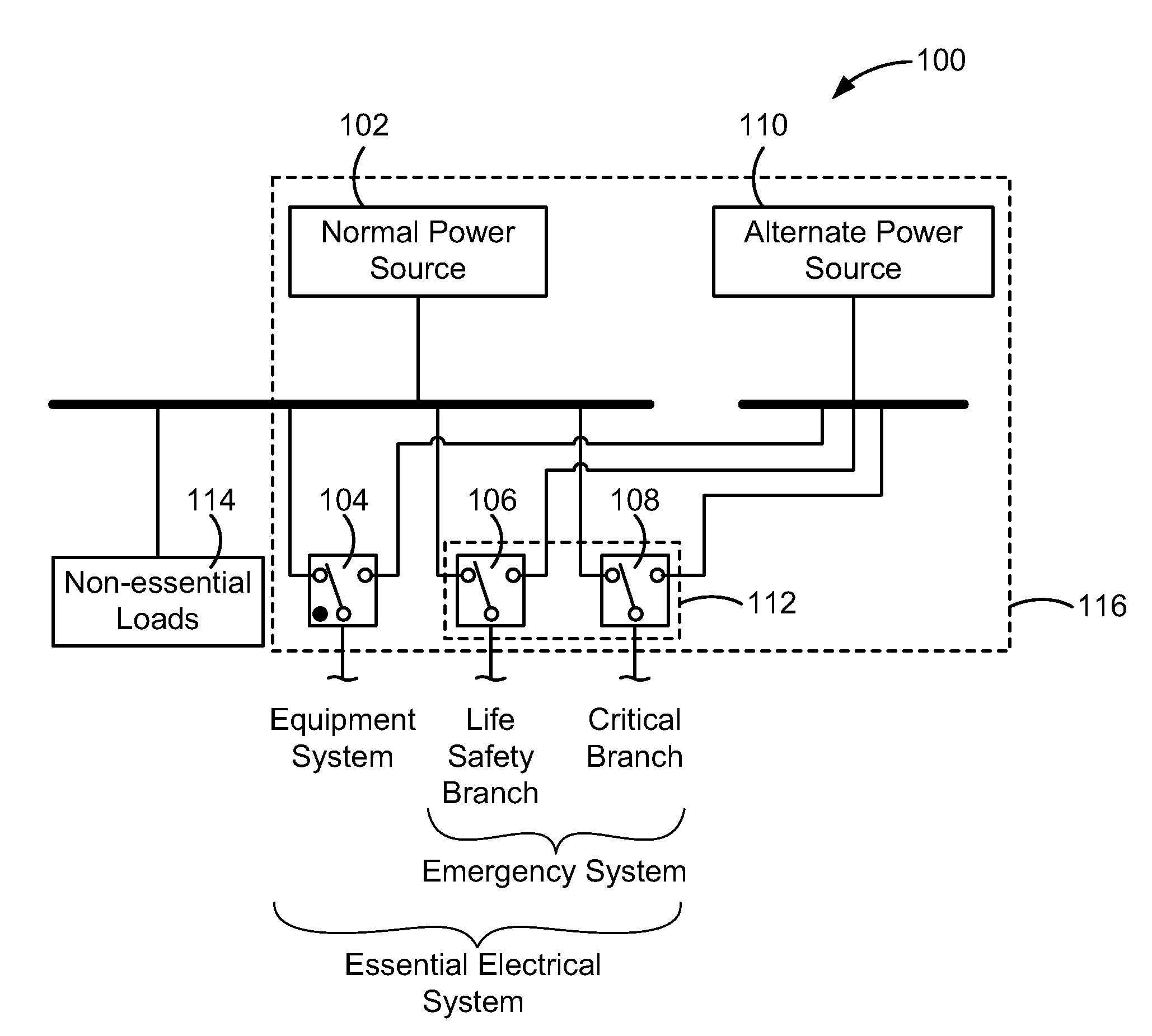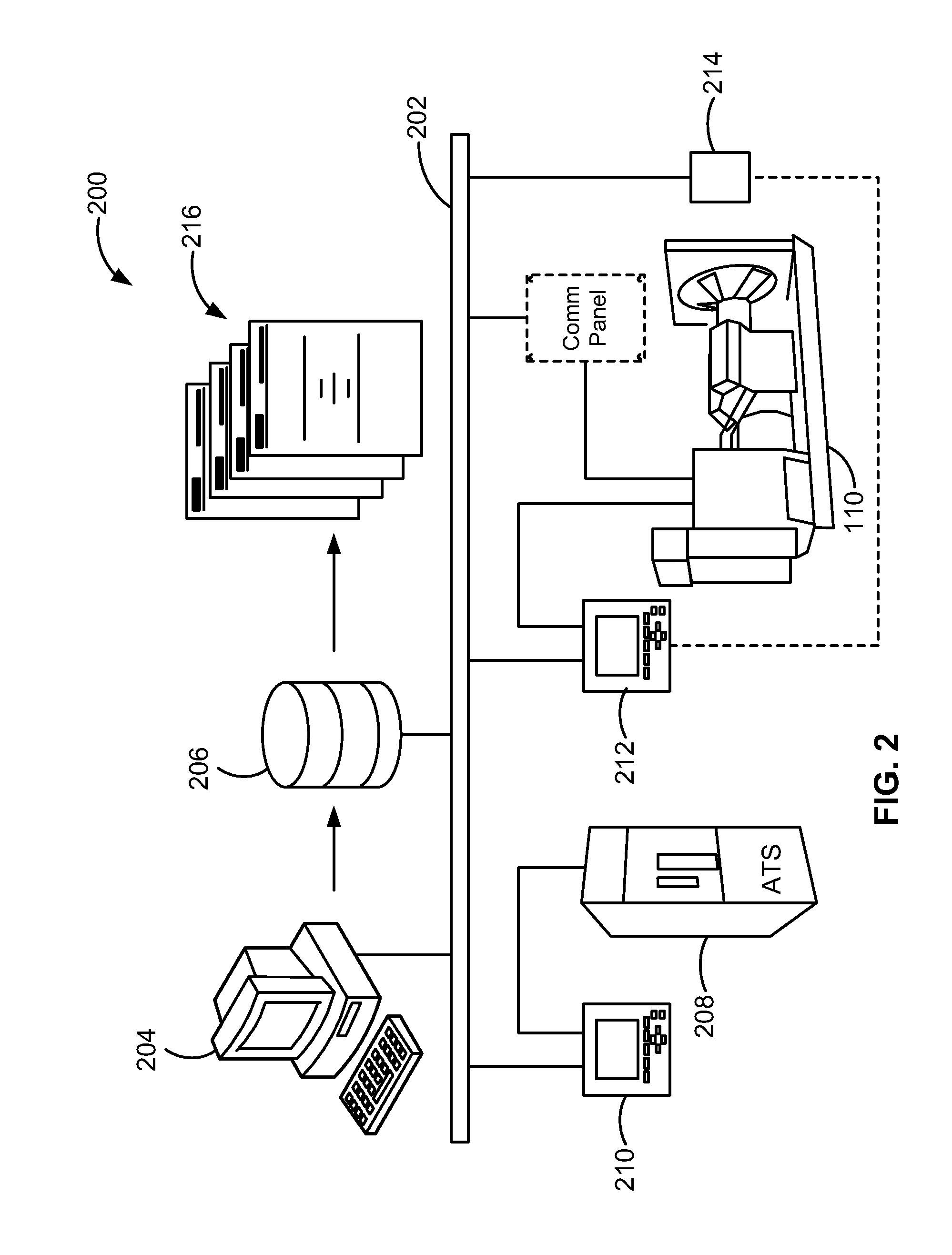Automated emergency power supply test using variable load bank stages
a power supply and variable load technology, applied in power supply testing, instruments, electric devices, etc., can solve the problems of insufficient monitoring of the terminal voltage of the battery, inability to detect manual data collection methods, subtle and gradual, etc., to increase the overall reliability of the eps system, reduce the burden of staff, and increase reliability
- Summary
- Abstract
- Description
- Claims
- Application Information
AI Technical Summary
Benefits of technology
Problems solved by technology
Method used
Image
Examples
Embodiment Construction
[0108]FIG. 1 is a functional block diagram of an example electrical system 100 that normally supplies electrical current to electrical loads within a facility or building, such as a hospital or healthcare facility, from a normal power source 102. When power supplied by the normal power source 102, such as a main utility power source, is interrupted, automatic switching equipment 104, 106, 108 automatically switches power supplied by the normal power source 102 to an alternate power source 110, such as a generator or genset, as that term is understood by those skilled in the art of power systems, or a direct current (DC) power source such as a battery. In the case of a hospital, the electrical system 100 can include an emergency system112 that supplies power to essential loads within the hospital that are supplied by life safety or critical branch circuits. Non-essential loads 114 in the hospital remain unpowered during a power outage from the normal power source 102. Within the esse...
PUM
 Login to View More
Login to View More Abstract
Description
Claims
Application Information
 Login to View More
Login to View More - R&D
- Intellectual Property
- Life Sciences
- Materials
- Tech Scout
- Unparalleled Data Quality
- Higher Quality Content
- 60% Fewer Hallucinations
Browse by: Latest US Patents, China's latest patents, Technical Efficacy Thesaurus, Application Domain, Technology Topic, Popular Technical Reports.
© 2025 PatSnap. All rights reserved.Legal|Privacy policy|Modern Slavery Act Transparency Statement|Sitemap|About US| Contact US: help@patsnap.com



